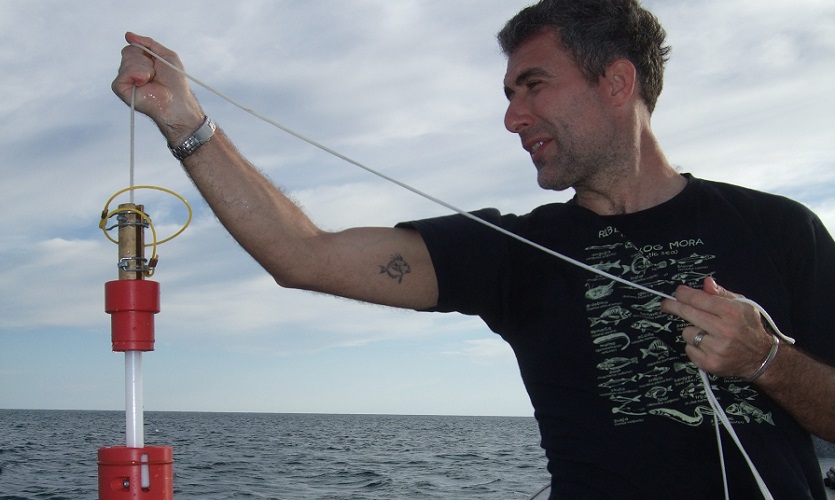Molecular 'track-and-trace' of ocean life outperforms traditional fish and marine surveys

Scientists who track-and-trace fish for a living claim that analysing seawater can tell us the richest story of what lies beneath the waves.
“We’re talking about a world not so far away when robot-subs send us an accurate picture of the health and functioning of a marine ecosystem simply by sampling the water,” explained Professor Stefano Mariani, of Liverpool John Moores University.
The secret lies in environmental DNA (eDNA), the ‘fingerprints’ of life left by all animals - living and dead – bones, scales, blood, eggs, faeces, and such like.
“All the clues that life has passed by lie in the water and the evidence is the DNA which can identify every life-form on this planet,” says Stefano. “So you can get around the problem of certain species avoiding the divers or others that cannot be netted.”
Publishing today (October 20, 2020) in the journal Molecular Ecology, the scientists provide evidence that environmental DNA not only outperforms other survey methods in capturing fish taxonomic diversity, but also functional diversity. That’s to say it not only efficiently “counts” more species of fish, but also picks up the broadest spectrum of ‘ecological types’ of fishes.
Outperforms visual and catch surveys
Basing their findings on 22 sites in the Mediterranean Sea, the team compared the molecular tests with three traditional survey methods - Underwater Visual Census, Baited Underwater Videos and Small Scale Fishery catches.
Analysis of 1,716 multi-method replicates showed that although some species could only be ‘caught’ by certain methods, overall, eDNA findings were more diverse in terms of species and the only method able to gather the whole spectrum of functional traits.
It all adds up to good news for marine conservation, as fishing and protection bodies get a more comprehensive picture of what animals are where in the ocean.
“It is cheaper, safer, you don’t need a ship or even a net and now we know it is also more democratic because it is less vulnerable to the biases of other survey methods,” said Dr Georgio Aglieri and Professor Marco Milazzo of the University of Palermo, which led the study.
“The fact that eDNA can capture functional diversity more comprehensively means that we can gather a fuller picture of ecosystem health, and measure more efficiently where the ‘hotspots’ of biodiversity are and whether marine protection is having a good effect.”
- The paper ‘Environmental DNA effectively captures functional diversity of coastal fish communities’ is authored by Giorgio Aglieri (University of Palermo), Charles Baillie (University of Salford), Stefano Mariani (Liverpool John Moores University), Carlo Cattano (University of Palermo), Antonio Calò (Cote d’Azur University), Gabriele Turco and Davide Spatafora (University of Palermo), Antonio Di Franco (Cote d’Azur University), Manfredi Di Lorenzo (National Research Council, Italy) and Paolo Guidetti (National Institute of Marine Biology, Naples) and Marco Milazzo (University of Palermo).
Images: Marine life at Cabo de Palos, Murcia (Credit Giorgio Aglieri); Stefano Mariani collects a eDNA water tube.


